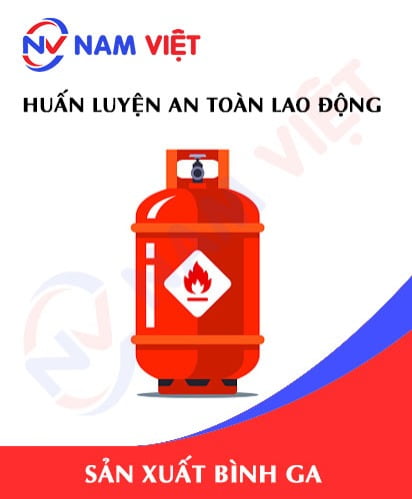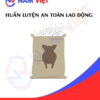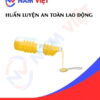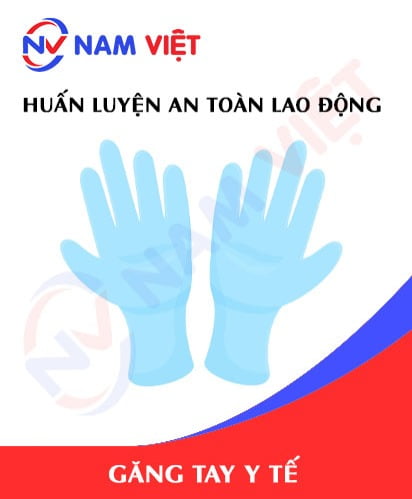Occupational Safety Training for Gas Cylinder Production
99,000 ₫
Note: The above price is calculated per person and may vary depending on the number of participants in the course and market fluctuations. For more accurate pricing support, please refer to the price list or contact our consulting staff directly.
Occupational safety is an important issue in gas cylinder Occupational Safety Training for Gas Cylinder Production factories and needs to be addressed promptly to ensure the health and safety of workers and enhance the reputation of businesses. The Occupational Safety Training course is one of the effective solutions to raise awareness of accident prevention for workers in gas cylinder Occupational Safety Training for Gas Cylinder Production .
Table of Contents
Toggle1. Overview of Gas Cylinders
a. What is a Gas Cylinder?
- A gas cylinder is a device for storing and transporting liquefied gas. It is widely used to supply energy for household appliances such as gas stoves, ovens, heaters, and many other devices. Gas cylinders are made from high-quality steel or aluminum, capable of withstanding pressure and preventing gas leakage. Cylinders are equipped with valves, gas level gauges, and safety valves to minimize the risk of fire, explosion, and accidents during use. Proper use of gas cylinders is crucial to ensure safety and avoid potential hazards.
- Vietnam is currently one of the largest producers and consumers of gas cylinders in Southeast Asia. Most gas cylinder manufacturing enterprises in Vietnam are either foreign-invested companies or joint ventures between foreign and Vietnamese partners.
- Gas cylinder manufacturers in Vietnam mainly produce cylinders with capacities from 12kg to 50kg, primarily supplying the domestic market. In addition, some companies export gas cylinders to international markets.

b. Machinery for Gas Cylinder Production
The machinery used in gas cylinder production includes:
- Steel Rolling Machine: used to manufacture cylinder shells from steel sheets.
- Submerged Arc Welding (SAW) Machine: used to weld the seams of cylinder shells.
- Gas Filling Machine: used to fill gas into cylinders during production.
- Quality Inspection Machine: used to check the quality of gas cylinders after production to ensure safety and compliance.
- Valve Crimping Machine: used to attach valves to the cylinder shells.
- Gas Production Machine: used to produce gas types to fill into cylinders.
- Gas Measurement Machine: used to measure the amount of gas filled into cylinders before packaging.
These machines are often integrated into an automated production line to improve efficiency and reduce production errors.

c. Typical Gas Cylinder Manufacturers
Notable gas cylinder manufacturers in Vietnam include:
- Vietnam Oil and Gas Group (PV Gas): Owns multiple gas cylinder factories and also imports and distributes gas nationwide.
- Vietnam Medical Equipment Joint Stock Company (VINAMED): Manufactures and supplies medical gas cylinders for hospitals and clinics across the country.
- Petrolimex Gas Trading and Service Company (PGB): A subsidiary of Petrolimex Group, producing and distributing gas cylinders nationwide.
- Petrosetco Gas Company Limited (PGC): Produces and distributes gas cylinders, owned by Vietnam Oil and Gas Group.
- Hung Anh Mechanical Company Limited: Manufactures and supplies industrial gas cylinders to major domestic and international clients.
- Petrolimex Saigon Gas Company Limited (PGS): Produces and trades gas cylinders, headquartered in Ho Chi Minh City with branches nationwide.
These are some of the prominent gas cylinder manufacturers in Vietnam, but many other companies also operate in this sector.
d. Specific Jobs in Gas Cylinder Manufacturing Plants
Group 1
- Executive Director, Deputy Executive Director, Department Heads in gas cylinder manufacturing plants.
Group 2
- Safety Officers: manage safety in the plant, design safety procedures, and supervise and enforce employees to comply with safe working procedures.
Group 3
- Shell Production: Use steel rolling machines to manufacture cylinder shells from steel sheets.
- Submerged Arc Welding (SAW): Use SAW machines to weld the seams of cylinder shells.
- Gas Filling: Use gas filling machines to fill gas into cylinders. Cylinders must be periodically checked to ensure correct gas quantity and quality.
- Quality Inspection: Use quality inspection machines to check cylinder products after production. Checked parameters include shell strength, thickness, pressure resistance, gas quantity, and gas quality.
- Valve Crimping: Use valve crimping machines to attach valves to cylinder shells.
- Packaging: Pack produced cylinders into special containers for delivery.
- Maintenance and Repair: Regularly maintain and repair equipment to ensure safe and efficient operation.
Group 4
- Office, support, sales, and marketing roles.
- Quality management, human resources, materials management, financial and accounting management.
- Research and development of new products, designing product packaging.
- Production Management: Manage and coordinate production activities to ensure timely, high-quality, and cost-effective production.

2. Overview of Gas Cylinder Occupational Safety Training
In this article, we focus on Group 3 because Group 3 is directly involved in production and is exposed to the highest occupational safety risks. For information on other groups, see here.
a. What is Group 3 Occupational Safety Training?
- Group 3 occupational safety training equips workers with awareness and methods to prevent occupational accidents.
- The training course helps workers recognize and avoid hazards, reducing the risk of accidents during work.
REGISTER FOR OCCUPATIONAL SAFETY TRAINING SERVICE
b. Training Duration
Initial safety training:
- Total training duration is at least 24 hours, including assessment time.
- 8 hours of theory on occupational safety policies and regulations.
- 8 hours of theory on basic occupational safety knowledge.
- 4 hours of theory on specialized training content.
- 2 hours of practical training on specialized content.
- 2 hours of final theory assessment.
Training centers may distribute sessions based on worker schedules, typically over 6 sessions in 3 days if continuous study is possible.
Periodic safety training:
- Before the occupational safety card expires, workers must undergo periodic safety training with a duration of at least 50% of the initial training.
Explanation: total periodic training time is at least 12 hours, including assessment. After completion and passing the test, workers will have their safety cards renewed.
c. Training Content
| No. | TRAINING CONTENT | TRAINING TIME (HOURS) | |||
| Total | Including | ||||
| Theory | Practice | Assessment | |||
| I | Occupational safety policies and regulations | 8 | 8 | 0 | 0 |
| 1 | Overview of occupational safety laws and regulations. | 6 | 6 | ||
| 2 | Standards and technical regulations on occupational safety. | 1 | 1 | ||
| 3 | Specific regulations by state authorities on safety in construction, expansion, or renovation of production facilities and use of machines, equipment, and hazardous materials. | 1 | 1 | ||
| II | Basic occupational safety knowledge | 8 | 8 | 0 | 0 |
| 1 | Basic knowledge of workplace hazards. | 4 | 4 | ||
| 2 | Methods to improve working conditions. | 1 | 1 | ||
| 3 | Safety culture in production and business. | 1 | 1 | ||
| 4 | Rights and obligations of employers and employees; safety policies; functions of safety officers. | 1 | 1 | ||
| 5 | Safety rules, signage, use of protective equipment; first aid and occupational disease prevention skills. | 1 | 1 | ||
| III | Specialized training content | 6 | 4 | 2 | 0 |
| Knowledge of machines, devices, hazardous substances; risk analysis and safe operation procedures. | 6 | 4 | 2 | ||
| IV | Final safety assessment | 2 | 2 | 0 | 0 |
| Total | 24 | 22 | 2 | ||
See more training content of the 6 groups
d. Occupational Safety Card
After completing the training and passing the assessment, workers will be issued a Group 3 occupational safety card (commonly referred to as a Group 3 occupational safety certificate).
The Group 3 card displays the worker’s name, date of birth, job, and work environment, along with training duration, red seal, and signature confirming course completion.
According to Article 24, Clause 2 of Decree 44/2016/ND-CP, there are two cases:
- If there is a labor contract between the employer and the worker, the employer must sign, stamp, and validate the card after the worker completes training and passes the test.
- If the worker is freelance or seasonal without a labor contract, the training unit must sign, stamp, and validate the card after the worker completes training and passes the test.

3. Identifying Hazards in Gas Cylinder Production
During the gas cylinder production process, there are several hazards that may occur, for example:
- Gas cylinders contain a flammable and explosive gas, so there is a risk of explosion if not handled properly. Causes of explosion risks may include production equipment, production processes, or improper usage.
- Gas ignites when exposed to fire or other heat sources. Gas cylinder production may pose a fire and explosion risk if gas escapes and comes into contact with a flame or heat source.
- Chemical products may be harmful to the health of production staff, such as metal powders, welding fumes, or chemicals used in the production process.
- Production machinery and equipment for gas cylinders may also pose dangers to workers, such as cutting machines, compressors, welding machines, etc.
- Gas cylinder users may also endanger themselves and others if they do not follow proper usage procedures or safety instructions.
4. Common Occupational Accidents in Gas Cylinder Production
Common occupational accidents during gas cylinder production include:
- Eye injuries: Production staff may be at risk when using chemical products or if materials are ejected during production.
- Burns or scalds: Gas in cylinders operates under high pressure and may cause burns or scalds if mishandled. Additionally, hot materials or production equipment can also cause burns.
- Collision injuries: Workers may experience accidents from collisions with production equipment, materials, or other objects during production.
- Poisoning or toxicity: Production staff may be at risk when exposed to toxic chemicals, metal dust, or harmful fumes.
- Explosion or fire injuries: Gas is highly flammable and explosive, posing serious risks if not handled properly.
5. Safety Measures for Participating in Gas Cylinder Production
To ensure safety during gas cylinder production, the following safety measures should be implemented:
- Ensure production equipment and technology are regularly maintained and inspected for safety and operational efficiency.
- Provide guidance and training for staff on occupational safety, including safety procedures and environmental protection regulations.
- Ensure compliance with occupational safety and environmental protection regulations throughout the production process.
- Use personal protective equipment properly, including helmets, safety goggles, protective clothing, gloves, safety shoes, and masks when handling hazardous materials or chemicals.
- Implement fire and explosion prevention measures and other emergency procedures in case of accidents.
- Ensure the safety of materials and finished products during production, including thorough quality checks before products are released to the market.
- Conduct regular workplace environmental monitoring in factories, collecting and analyzing harmful factors to adjust and reduce risks, thereby preventing occupational diseases.

6. Benefits of Occupational Safety Training for Gas Cylinder Production
An Toan Nam Viet provides your business with the following benefits upon completing occupational safety training courses in accordance with Decree 44/2016/ND – CP on occupational safety and hygiene for companies, factories, and enterprises.
- Employees can identify potential occupational hazards and take preventive measures to avoid accidents.
- Your business can establish risk prevention measures in production, operation, and maintenance processes.
- Reduce costs associated with potential workplace safety incidents.
- Uninterrupted production improves labor productivity and product quality.
- Ensure compliance with labor safety laws and reduce legal risks.
- Enhance reputation and professionalism, thereby elevating your company’s brand.
Nam Viet’s training programs provide solutions to prevent external factors from endangering individuals, helping them avoid injuries or, in severe cases, fatalities.
REGISTER FOR OCCUPATIONAL SAFETY TRAINING
7. Customer Feedback After Completing Gas Cylinder Production Safety Training
An Toan Nam Viet has years of experience supporting many businesses across Vietnam in general and in the southern provinces specifically. This responsibility is extremely valuable, which is why An Toan Nam Viet always prioritizes professional and high-quality occupational safety training. Our growth is fueled by positive feedback and suggestions from businesses. Below are testimonials from our partners.
Bac Nam E&C Construction Investment Joint Stock Company
“My first experience with An Toan Nam Viet surprised me with their 24/7 support from the consulting team. The class organization was quick and convenient for our company. Thank you very much for Nam Viet’s service!”
Hoa Dat Construction and Trading Joint Stock Company
“Nam Viet’s service greatly helped us simplify occupational safety and complete safety documentation for our operations. The consulting team was enthusiastic and responsive to our questions. 5 stars for Nam Viet.”
See more customer interviews after using the service from An Toan Nam Viet
8. An Toan Nam Viet Occupational Safety Training Capacity
An Toan Nam Viet is a reputable and high-quality occupational safety training center in Vietnam. Training sessions are conducted continuously at production workshops, factories, or construction sites across all 63 provinces of Vietnam.
REGISTER FOR OCCUPATIONAL SAFETY TRAINING
Occupational Safety Training License
- An Toan Nam Viet has been inspected and certified by the Department of Safety of the Ministry of Labor, War Invalids, and Social Affairs, granting a certificate of eligibility for occupational safety and hygiene training. This further strengthens our capacity in occupational safety training.

Training Materials and Lectures
- Before training materials are included in occupational safety training courses, they are reviewed to ensure accuracy and effectiveness.
- Teaching methods are standardized according to An Toan Nam Viet standards, developed by experts in occupational safety and hygiene training to maximize knowledge retention.
Facilities
- Control of classroom factors enhances teaching efficiency and learning effectiveness.
- Our training facilities include spacious classrooms meeting standards for area, lighting, and training equipment, etc.
9. Nationwide Reputable Occupational Safety Training Center
At An Toan Nam Viet, we prioritize occupational safety training as a top professional commitment. Imparting knowledge on self-protection equips workers with safety skills essential for their livelihood and contributes to national development.
To ensure effective training, we meticulously prepare every detail, from teaching tools and equipment to curriculum, documents, sound, and lighting.
Our instructors are experts with many years of experience, including research on hazard identification across industries and prevention methods.
Lectures are based on practical experience and delivered in an engaging, easy-to-understand manner, helping workers comfortably absorb knowledge. Training content aligns with Decree 44/2016/ND-CP.
Workers learn various hazard prevention measures and self-protection methods, which can be applied effectively in real work scenarios.
Our training center proudly provides reputable, professional occupational safety training with the following advantages:
- Competitive training costs without compromising quality.
- Flexible training schedules aligned with company production.
- Fast certification procedures complying with legal regulations.
- Experienced instructors with long-term industry expertise.
- Controlled classroom conditions to enhance teaching and knowledge retention.
- Customized lectures suitable for enterprise occupational safety requirements.
- An Toan Nam Viet works diligently and professionally to provide precise and rapid customer support.

10. Additional References for Gas Cylinder Production Safety Training
- Gas Cylinder Production Safety Training Materials
- Occupational Safety Training Materials Set
- Occupational Safety Training Exam Set
- Gas Cylinder Production Safety Multiple-Choice Exam
- Gas Cylinder Production Safety Training Slides
1 review for Occupational Safety Training for Gas Cylinder Production
No comments yet















namchinh.haiphong341
Tôi đánh giá cao dịch vụ của trung tâm !